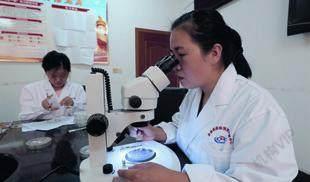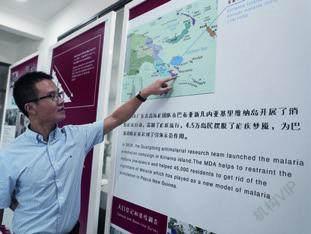Wiping Out an Infectious Disease
2021-07-19ByJiJing
By Ji Jing



Dong Xueshu, an 86-year-old researcher with the Yunnan Institute of Parasitic Diseases in Yunnan Province, has been studying mosquitoes for seven decades.
Dongs research started in 1956, when a malaria epidemic broke out in Menghai, a county in Xishuangbanna Dai Autonomous Prefecture, Yunnan.
As there was no effective medicine for treating the disease at that time, Dong, who then worked for the Yunnan provincial epidemic prevention department, and his colleagues were tasked with finding the cause of the disease to stop its transmission.
Although the Anopheles mosquitoes were already known to be the transmission medium, there were over 50 varieties of Anopheles mosquitoes in Menghai alone. Finding the specific mosquito types responsible for spreading the disease thus became a matter of the utmost urgency.
Dong and his colleagues trapped mosquitoes in the bedrooms of local villagers and outside the pigsties and cowsheds. He had even used his own bare legs to entice the zooming little vampires. He would suck the insects into a tube and then determine whether they contained Plasmodium, the parasite causing malaria.
After two years, Dong was able to identify the Anopheles minimus as the main medium for the transmission of malaria in the county. Through targeted mosquito prevention and eradication, the areas infection rate gradually came down.
Yunnan used to be seriously affected by malaria as its rainy season, especially, offers fertile breeding grounds for mosquitoes. The province further borders three countries where malaria was prevalent, namely Laos, Myanmar and Viet Nam, with cross-border transmission leading to the spread of the disease.
Through generations efforts, Yunnans malaria prevention and control have made big strides forward. The province realized its malaria-free goal in June after having reported zero indigenous cases for four consecutive years.
Yunnans progress epitomizes the countrys achievements in its battle against malaria. On June 20, China was awarded a malaria-free certification by the World Health Organization(WHO), a remarkable feat for a country which reported around 30 million cases of the disease annually in the 1940s.
Globally, 40 countries and territories have been granted the malaria-free certification by the WHO—including, most recently, El Salvador(2021), Algeria (2019), Argentina (2019), Paraguay (2018) and Uzbekistan (2018).
The WHO grants the certification when a country has demonstrated that the chain of indigenous malaria transmission by Anopheles mosquitoes has been interrupted nationwide for the past three consecutive years at least. A country must also demonstrate its capacity to prevent the re-establishment of transmission, according the WHO website.
